Abstract
In a previous experiment on the preservation of hay of high moisture content with formic acid, among other agents, aflatoxin was formed in the hay, and aflatoxin-forming strains of Aspergillus flavus were isolated from this hay after incubation in air as well as in an anaerobic jar. One isolate from the anaerobic jar was cultivated in a chemostat (Bioflo model C 30; New Brunswick Scientific Co.) in a defined medium with added B vitamins, yeast extract, or formic acid, with or without gas flow (air or nitrogen). In all cases where spore germination occurred, aflatoxin was formed in the cultures with gas flow, and small quantities of aflatoxins B1 and B2 occurred even in an atmosphere of nitrogen. Addition of B vitamins and supply of traces of air gave an approximately 15-fold increase in the amount of aflatoxin in 2 days. Carbon dioxide enrichment hindered aflatoxin formation on the defined medium even in the presence of B vitamins, but when formic acid was added, small quantities (5 to 15 micrograms/liter) were formed, and this low level remained constant until the gas flow was started.
Full text
PDF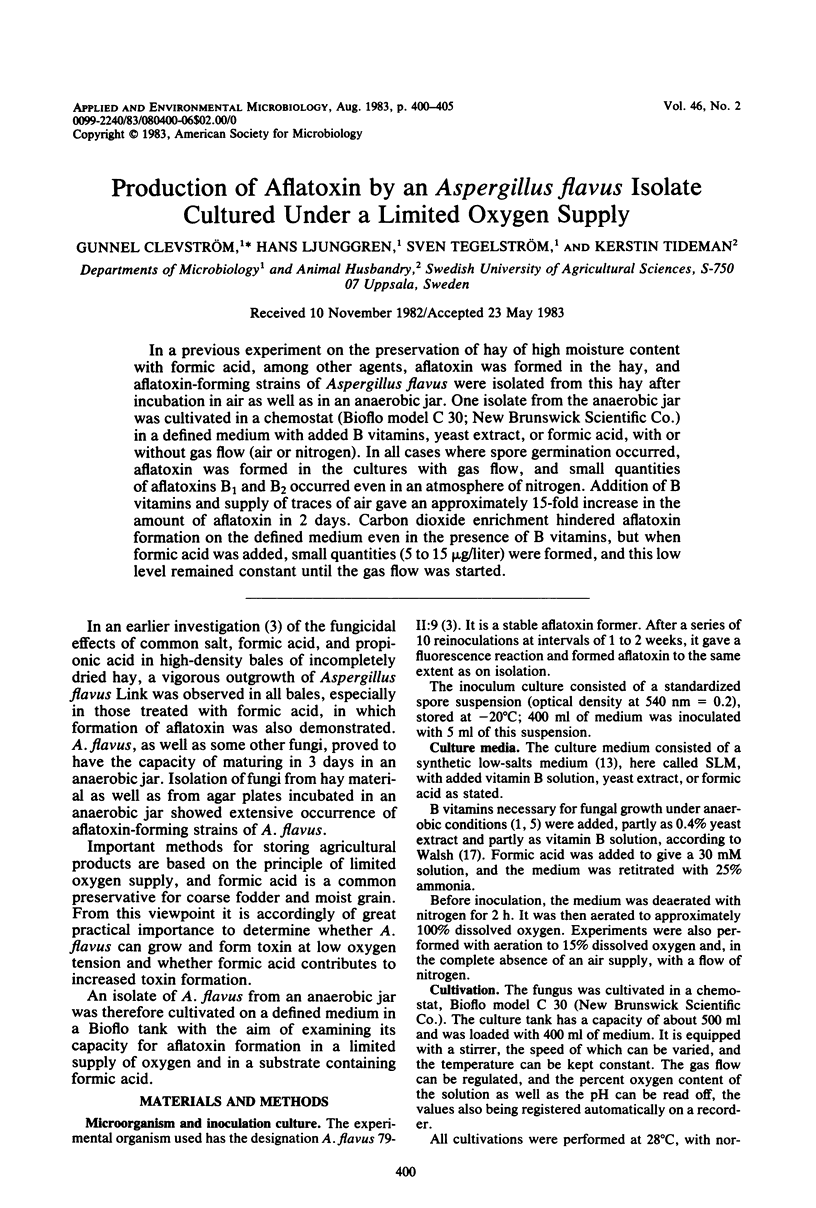

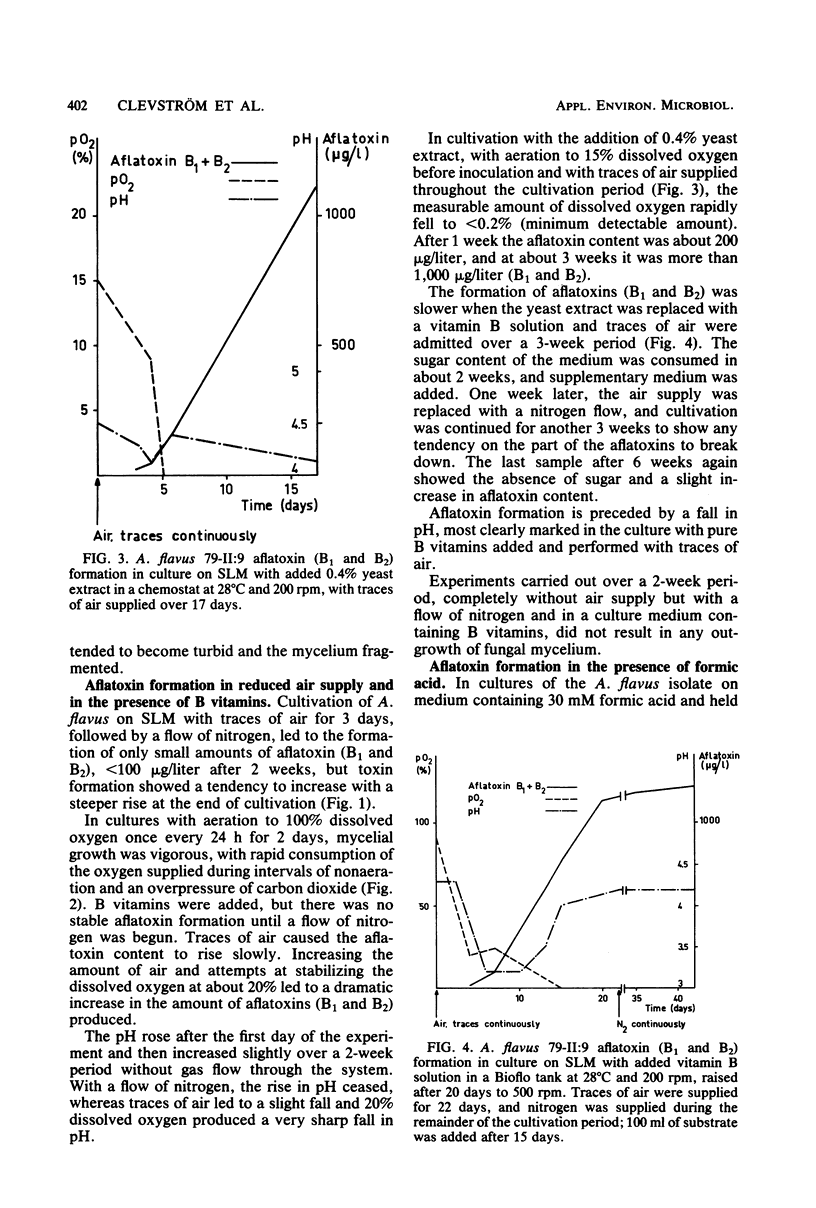
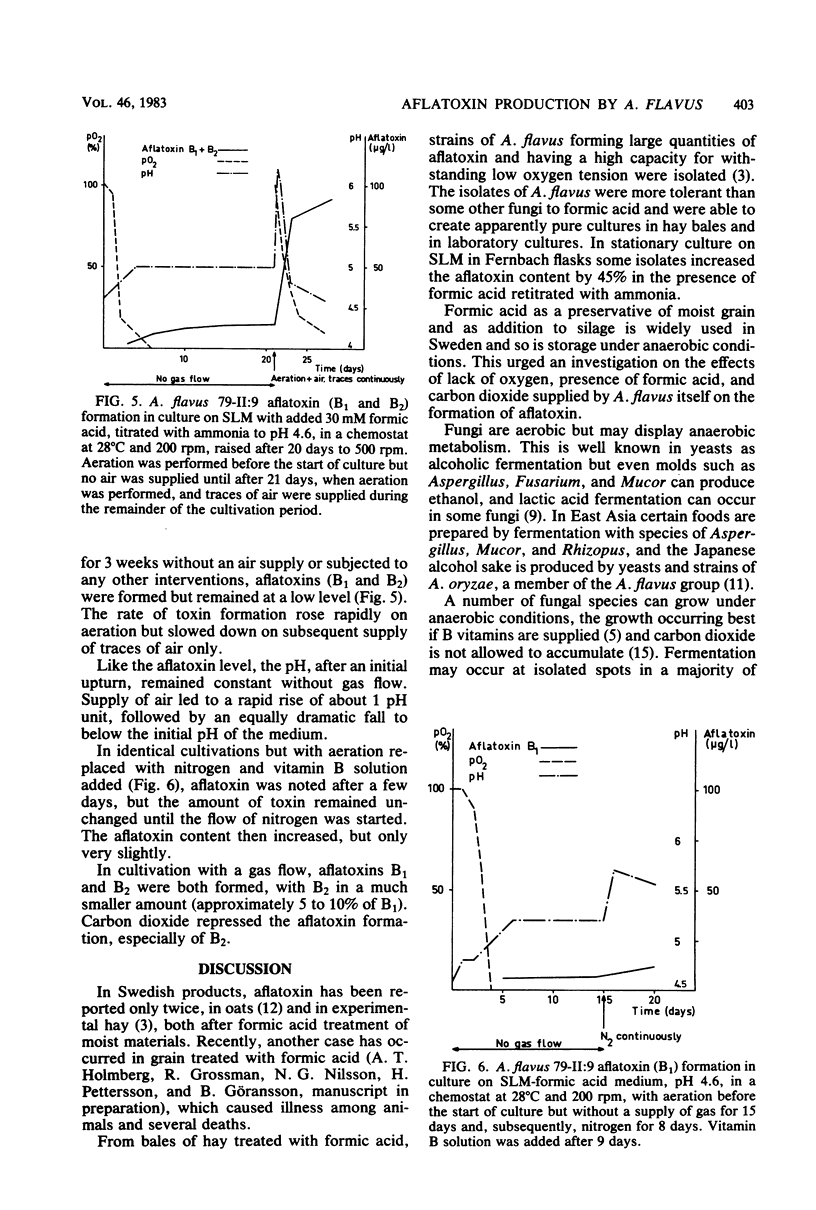
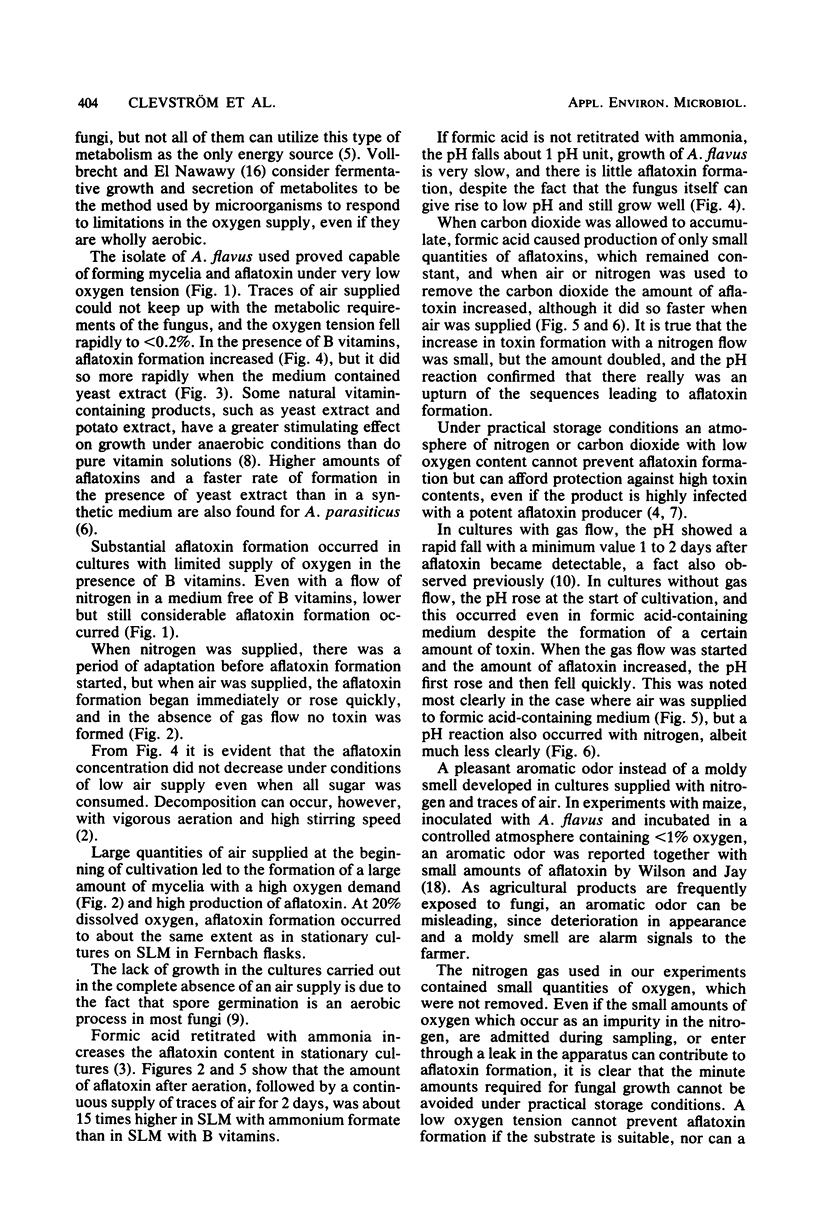
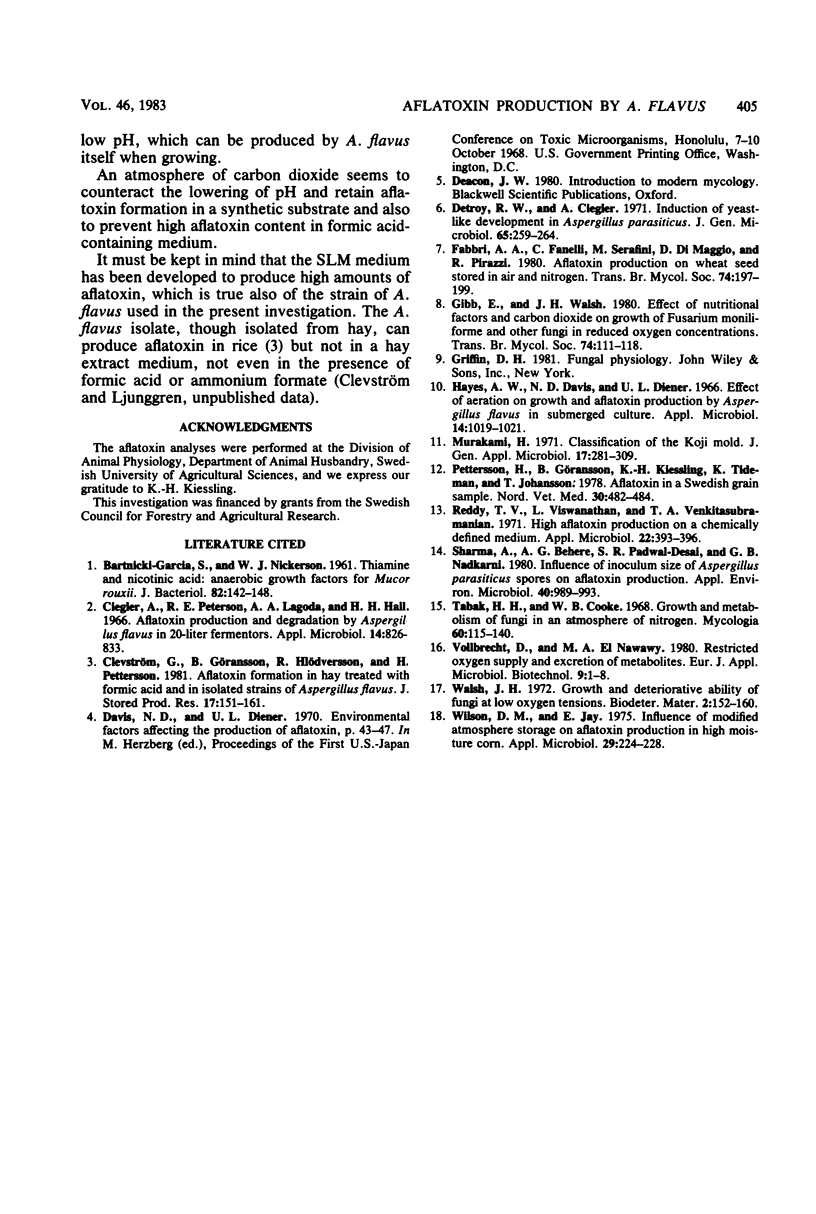
Selected References
These references are in PubMed. This may not be the complete list of references from this article.
- Bartnicki-Garcia S., Nickerson W. J. THIAMINE AND NICOTINIC ACID: ANAEROBIC GROWTH FACTORS FOR MUCOR ROUXII. J Bacteriol. 1961 Jul;82(1):142–148. doi: 10.1128/jb.82.1.142-148.1961. [DOI] [PMC free article] [PubMed] [Google Scholar]
- Ciegler A., Peterson R. E., Lagoda A. A., Hall H. H. Aflatoxin production and degradation by Aspergillus flavus in 20-liter fermentors. Appl Microbiol. 1966 Sep;14(5):826–833. doi: 10.1128/am.14.5.826-833.1966. [DOI] [PMC free article] [PubMed] [Google Scholar]
- Detroy R. W., Ciegler A. Induction of yeastlike development in Aspergillus parasiticus. J Gen Microbiol. 1971 Mar;65(3):259–264. doi: 10.1099/00221287-65-3-259. [DOI] [PubMed] [Google Scholar]
- Hayes A. W., Davis N. D., Diener U. L. Effect of Aeration on Growth and Aflatoxin Production by Aspergillus flavus in Submerged Culture. Appl Microbiol. 1966 Nov;14(6):1019–1021. doi: 10.1128/am.14.6.1019-1021.1966. [DOI] [PMC free article] [PubMed] [Google Scholar]
- Pettersson H., Göransson B., Kiessling K. H., Tideman K., Johansson T. Aflatoxin in a Swedish grain sample. Nord Vet Med. 1978 Nov;30(11):482–485. [PubMed] [Google Scholar]
- Reddy T. V., Viswanathan L., Venkitasubramanian T. A. High aflatoxin production on a chemically defined medium. Appl Microbiol. 1971 Sep;22(3):393–396. doi: 10.1128/am.22.3.393-396.1971. [DOI] [PMC free article] [PubMed] [Google Scholar]
- Sharma A., Behere A. G., Padwal-Desai S. R., Nadkarni G. B. Influence of inoculum size of Aspergillus parasiticus spores on aflatoxin production. Appl Environ Microbiol. 1980 Dec;40(6):989–993. doi: 10.1128/aem.40.6.989-993.1980. [DOI] [PMC free article] [PubMed] [Google Scholar]
- Tabak H. H., Cooke W. B. Growth and metabolism of fungi in an atmosphere of nitrogen. Mycologia. 1968 Jan-Feb;60(1):115–140. [PubMed] [Google Scholar]
- Wilson D. M., Jay E. Influence of modified atmosphere storage on aflatoxin production in high moisture corn. Appl Microbiol. 1975 Feb;29(2):224–228. doi: 10.1128/am.29.2.224-228.1975. [DOI] [PMC free article] [PubMed] [Google Scholar]


